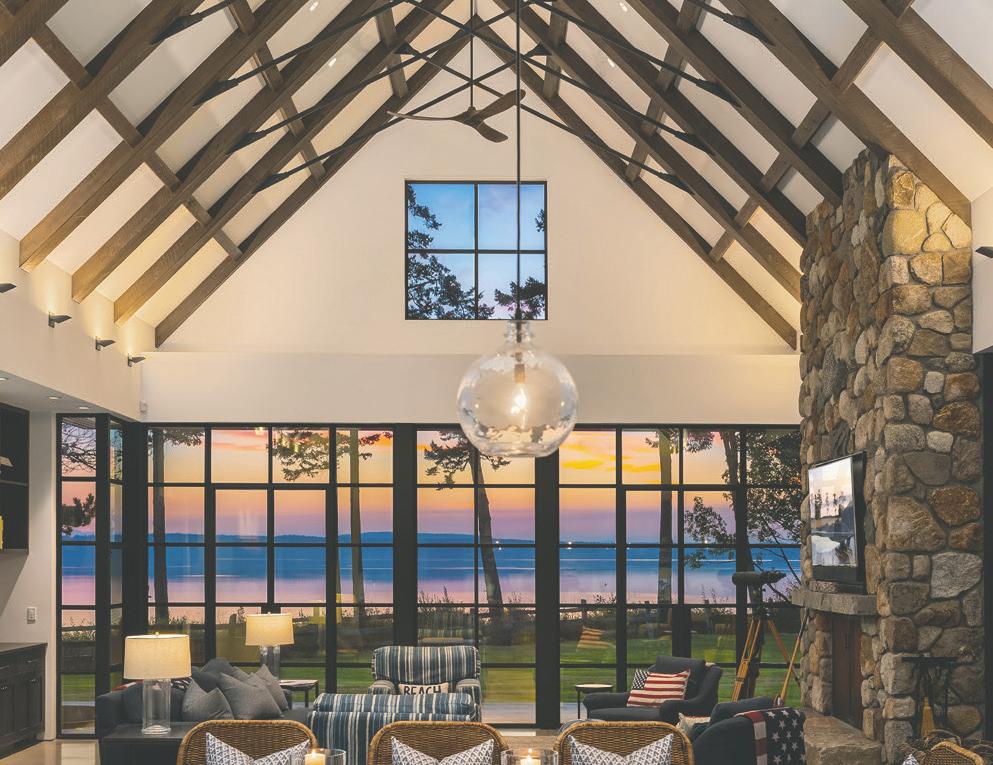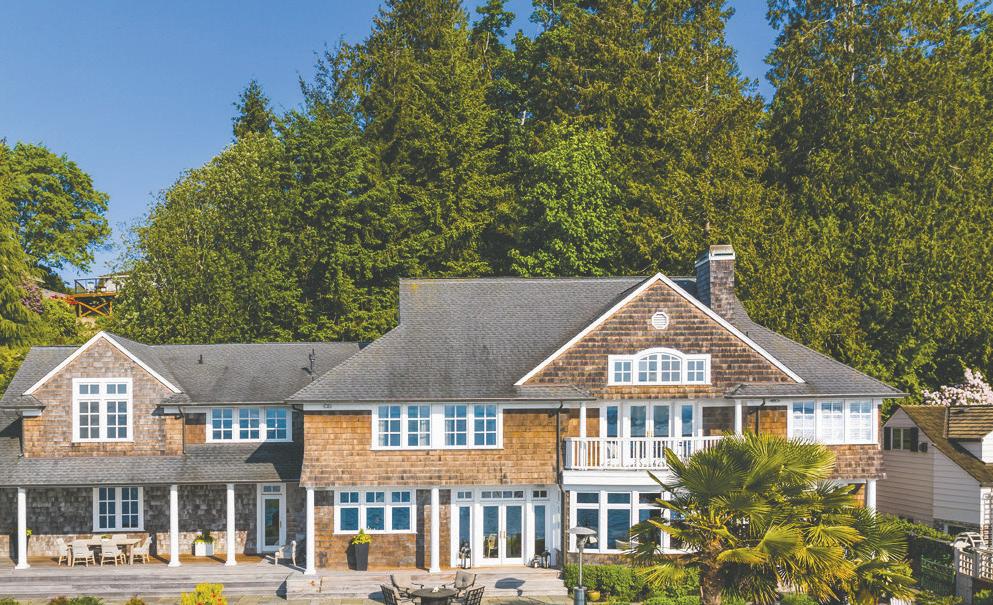Seattle officials attend



Madison Park was buzzing on July 11, with more than 150 community members attending our first “Love Happens Here” event.

Those in attendance were treated to bottles of water and homemade cookies by Julie L. We were thrilled to have three Seattle officials in attendance who addressed the crowd with assurances that they are here to support our merchants and residences.

We encourage everyone to go to the website of our newly renamed Madison Park Community Council — www. Friendsofmadisonpark.com — and register to join our list to keep up to date with all things Madison Park.




Earthquake preparation always seems like something to do “when I find time”. Because most of us have far more pressing squeaky wheels demanding attention, it’s easy to put off planning for something that’s hard to wrap one’s head around.
A decade or so ago, more articles appeared clarifying that for the Pacific NW, it’s not a question of IF, but WHEN, a devastating quake will strike. That’s when I realized it would be irresponsible for me not to do some kind of preparation. My primary accomplishment was to gather recommended survival supplies for 3 days and I promptly treated that like a “one and done”. Then I started meeting people with stories of living through earthquakes and realized I was hardly taking this seriously at all.
A big awakening for me was a conversation with Madison Park neighbor Bob Edmiston, an early developer of the MP Emergency Communications Hub work. I said something sassy like, “I’ve got my provisions gathered in a box outside our home, but I haven’t gone mental like putting shoes under my bed. Do you think that’s really necessary?”
“Oh yes”, Bob replied. “I grew up in California and some of the bigger quakes left broken glass all over the place. You don’t want to be stepping through that when the shaking stops and it’s safe to uncover your head and try to leave your house. And be sure to tie those shoes to the bedpost so they don’t slide across the floor out of reach.” Gulp! I hadn’t exactly pictured walking across glass shards as a likely scenario.
Over the years I’ve worked with Bob and other neighbors mobilizing preparation efforts at three different levels: the individual home, two blocks around your home, and the wider number of households designated as your Seattle neighborhood (i.e., Madison Park, Madison Valley or Leschi.) Each neighborhood is encouraged to develop an Emergency Communication
Hub with a designated location and team of volunteers who come together to assist each other after a disaster disrupts traditional communication systems and municipal services.
The designated location for Madison Park is by the tennis courts. In recent months our Hub volunteers have been teaming up with adjacent neighborhood Hubs sharing what we’re learning and helping each other host practice drills.
The other day my spouse, asked me, “So if an earthquake happens and you’re not here, what are the 10 most important things for me to do once the quaking stops?” Here was a good test to see how much learning I’ve really integrated. I came up with about 5, then went on a Google search starting with OEM: Emergency Management - Emergency Management | seattle.gov. I tapped into resources from Travis Pittman at the Seattle Times, the Ballard Commons Emergency HUB, and the Seattle Hub Captains digital resource library..
With acknowledgement and appreciation to all who’ve contributed, here’s a distillation of those 10 important things I would do immediately following a destructive earthquake. Consider printing and posting this list for easy access after a quake.
• Calm yourself and check for injuries.
• Do you or anyone around you need first aid?
• Stop any bleeding with firm compression using any clean fabric.
(To learn how to stop life threatening bleeding, take one of OEM’s Stop the Bleed trainings.)
• Get your shoes on and dress with safety in mind.
• Consider where you are, what dangers you might encounter, what’s available to keep you safe. You may need a helmet, leather gloves, or a facemask.
• Check safety hazards inside and outside.
• Utility hazards
• If you smell rotten eggs or hear gas leaking, turn off the valve to the gas line outside your home. (Consider getting a heating expert to install an Earthquake Actuated Gas Shutoff Valve.)(Note: Gas lines can only be turned back on by the city so only shut off if necessary.)
• Avoid flipping any electric switches until you confirm you have no gas leaks.
Fire hazards
Search for any small fires and extinguish them.
If you see sparks, frayed wires, or melting insultation, shut off electricity at the circuit breaker.
To prevent fires when electricity is restored, unplug broken lights and appliances.
Toxic hazards
Clean up spills that could be harmful such as bleach, gasoline, and chemicals. (Alternatively, smother with absorbent material like dirt or cat litter.)
If you detect no fire or fumes outside your home, open the windows to ventilate and improve air quality.
Outside hazards
To avoid harm during aftershocks, check for cracks and damage to the roof, chimney, roofs over doors and the foundation of buildings. Stay far away from any downed power lines.
Keep water clean and safe for drinking.
Turn off water supply at street shut-off valve to prevent contamination.
Turn off power/gas/cold water supply at water heater to preserve as source to use.
Call, text, or email your outof-area contact to report your condition. Ask them to tell others.
Text and messaging apps work better than voice calling.
Landline phone may work using wall jack to bypass power outage.
Preserve cell phone battery power: shut off all nonessentials, only use when necessary, cand keep phone charged by car battery, solar panel, or emergency radio crank.
Alert neighbors of your status (Safe or Need Help/Where to find me) by posting large sign. Check on your pets and your neighbors, especially those
with special needs. young children, or elderly members of household.
Be prepared for aftershocks, perhaps planning to camp out in yard or detached garage.
Ration use of resources except for drinking water.
Plan to use or share first what will spoil.
Keep refrigerator and freezer closed as much as possible if power is out.
Put your fire extinguisher in front of house for others to use if necessary.
Locate and secure important items such as first aid kits, flashlights, batteries, money, ID, warm clothing, food, grab and go emergency bag.
Make your way to the designated neighborhood Emergency Hub to volunteer or ask for help.
Keep your neighbors informed, supported as needed.
Help keep spirits up with reassurance, and any special talents you have to offer, such as music and song, smiles and humor, group activities.
Most of us don’t want to think about the serious disasters ahead of us. It’s easier to hope we’ll be spared, and things won’t be so bad. But just last month the UW Dept of Geological Science released more information about their earthquake research in the PNW.
It’s worth noting that severity rises exponentially.
For instance:
9.0 quake is 30 times bigger than a 8.0 quake
9.0 quake is 900 times bigger than a 7.0 quake
9.0 quake is 18,000 times bigger than a 6.0 quake.
Let’s join together to get prepared. Beyond getting your household in order, find a handful of people on your block to start conversations and help each other take some specific steps. This will spur you to draw on the wealth of emergency preparation resources available, including periodic neighborhood trainings and practice drills.

To get involved in the Madison Park/Madison Valley Emergency HUB work, contact us at madparkhub@gmail.com. Active volunteers have access to our MP/MV Hub Google drive with terrific resources archived.



Sta Report
e Washington Park Arboretum will host two nights of music, treats and relaxation among the trees this August.
All ages welcome.
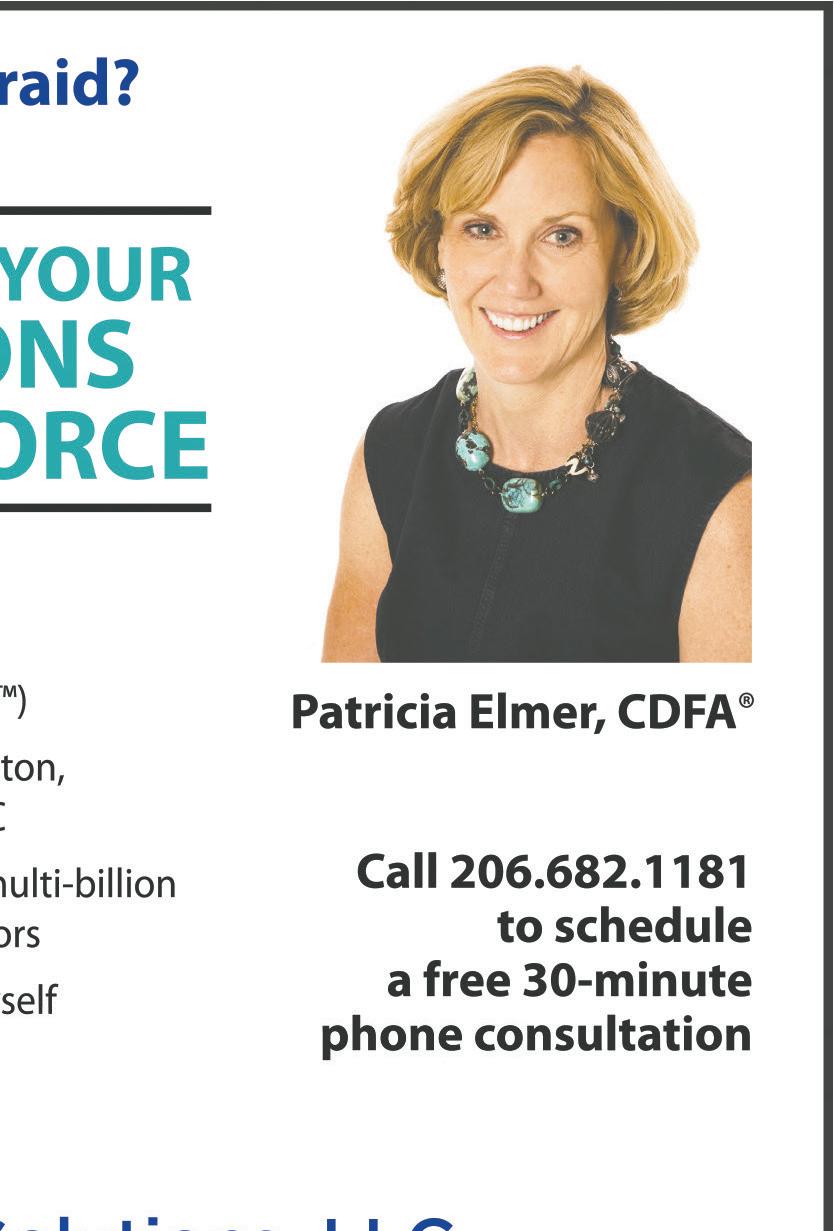
First up, on Wednesday, Aug. 9 from 6 to 8 p.m., is the Jose Gonzales Trio, who like to put a fresh stamp on jazz standards by irting with pop, funk, and R&B.
en, on Wednesday, Aug 23, from 6 to 8 p.m., Gansango Music & Dance presents traditional and
contemporary dance and music from West Africa. Both performances will take place at the Graham Visitors Center in the Arboretum, 2300 Arboretum Drive East, Seattle. Guests can enjoy free ice cream from Sweet Alchemy while supplies last. is free community event is hosted by the Arboretum Foundation. For more information, arboretumfoundation. org/events/music-in-thearboretum

Sta Report





Starting Aug. 3, bring your picnic blanket and food, bring the whole family, and settle in from 6:30 p.m. to 8 p.m. to listen to a wide variety of musical styles under late summer sky at the park.
Buy a ra e ticket and present
it at McGilvra’s Pub or Parlour Wines and they will donate a portion of your purchase to Friends of Madison Park. Ra e tickets are $5 or 3 for $10 and can result in gi certi cates from several of Madison Park businesses.
e schedule:
Aug. 3: Buena Vibra Sextet with Salsa dancers (sponsored by Windermere Real Estate)


Aug. 10: Buckboard Junction (Parlour Wines; co-sponsor TBD)


Aug. 17: Woods Creek Band (sponsored by Aegis Living)
Aug. 24: e Daddz (Wicklund Real Estate; co-sponsor TBD)

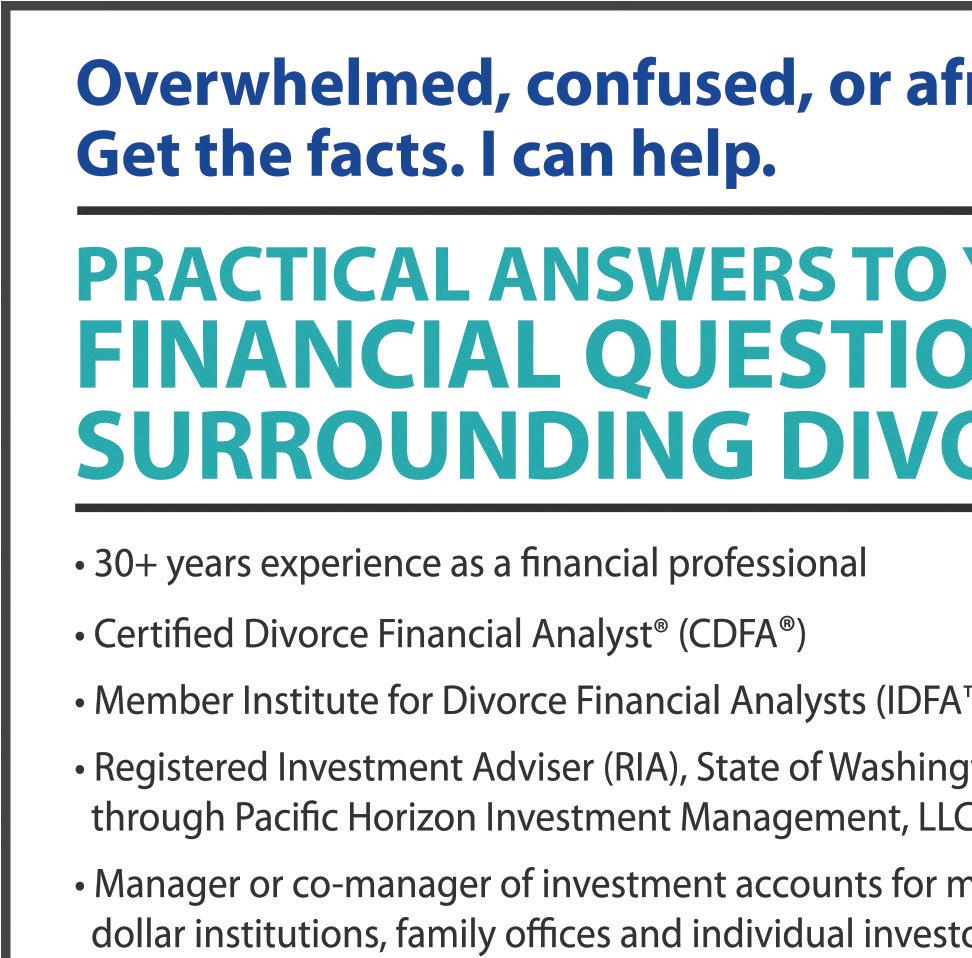
PARK from Page 1
e play area is located on the western edge of Washington Park Arboretum at East Lynn Street & 26th Avenue East. is play area renovation project enhanced safety and improved overall accessibility for young children. e new play equipment is located within the previous play area footprint and o ers opportunities for sliding and climbing. An education panel on the play equipment displays graphics of animal tracks.
Love is just dropped in our lap sometimes or into an open hand. In the self-contained and sometimes
self-defined little village of Madison Park at the tail end of Madison by the lake, we are not often led to a revelatory moment in our lives, but given the racial incident perpetrated on Marisa Spooner-LeDuff, the moving force of a muchneeded art presence in her gallery, Domicile, new perspectives have been brought to the community.
Who would have thought that someone would taunt her when she came out of a shop one late after-noon to hear two white men tell her to go back where she came from. Not as a comedic retort, but in
fact, she said “Madrona.” Madrona, a few blocks from the Madison Park neighborhood, is where Marisa and her family have lived for decades.
Then came the noose, hung outside the building she shares with another retail shop. How could this happen? What are we not seeing? Whom do we talk to and what do we not hear?
The police are on it. The FBI are on it. The Madison Park Times is on it. Front page reporting for Marisa, nothing slipped under the radar, everything out in the open.

Then there is some comment, a letter to the Times editor, accusing Marisa of being a victim. As if that were some stain on her Black body. Marisa tells the crowd gathered to support her on July 11, “I am not a victim.” The thing is, she really is, but not in the sense that the letter-tothe-editor-person implies.
She is a victim of White Supremacy ideation, and it has got to stop! If it doesn’t stop now, right now, in enlightened and highly educated Madison Park, where or when will it stop?
It has been 55 years and three and a half months since Martin Luther King, Jr. gave his speech at the National Cathedral in Washington, D.C. We forget the beginning of that famous sentence: “We shall overcome because the arc of the moral universe is long, but it bends toward justice”.
The song sung there in the great cathedral, The Battle Hymn of the Republic, Our God is Marching On, as King sang it, had a call and response:
How Long? Not Long. Can we please make it not long for Marisa?
Lyn TullyWrong attitude
I am head-shaking almost speechless by Ms. Randall’s letter denying, “with no proof” the shameful, confirmed acts of racism in the Park. She should be ashamed of her attitudes and for publishing them.
Buz HumphreyLetter was proof racism exists
I’m hoping the editor will pass on my letter to you … PUBLICLY, because you deserve to be spoken to sternly and without the benefit of privacy. You thankfully outed yourself as to the exact issues at hand in Madison Park, as well as a large portion of the spendy neighborhoods in and around Seattle. While you are clutching your pearls in shock and horror that someone isn’t as enamored with Madison Park as you, you make an addle-brained attempt at defending situations you don’t seem to understand or recognize. Just because you don’t see, or haven’t been affected by racism or bigotry, doesn’t mean it doesn’t exist, even in Madison.
I grew up in this town and BELIVE me, Seattle has some of the most racist people in the country, and yes Terri, some reside and work in Madison Park.
Don’t beleive me? Let me help you see the reality you so greatly ignore. I was born in 1967 at Swedish. I attended the Bush school as well as SAAS. My brothers went to Lakeside and Overlake.

I spent a lot of time in Madison Park; as you can imagine, between school, friends, the “beach,” etc., and in the 70’s and 80’s the bigotry was on full display. It isn’t a secret that both the Tennis Club, Broadmoor CC, and neighborhood practiced segregation for years, and the “Red Line” ensured Whites wouldn’t live alongside people of color. Yes, my white parents bought 2…?! There ya go-RACISM. Shall I continue? Oh, shall I mention that I am both Black and White? I know, imagine, a mixed girl mixing in those places and belonging to the WAC as early as the 70’s! Yes! The WAC was restricted too. I was adopted by an all white family so I assimilated. I lived in Roanoke Park, and yes, like my white siblings, I attended private schools in and around Seattle. What did I learn? I learned that white privilege exists and it’s alive and well; living, breathing and GROWING in the hometown I once loved deeply. When I was with my white family and friends I was treated differently than when I was alone, I still am Terri and I’m 55 now! You are completely living in your clueless bigoted life, unaware that just because it hasn’t been directed at you or even someone you know it still exists.
If someone racists things were yelled at her, it happened. Most people have better things to do than “cry wolf” regarding racism, rape, etc., because victims are frequently stigmatized, or disbelieved-you, you are the disbeliever here. By the way, therapist here. These are grown people with accounts of various exchanges and not just against 1 gallery owner.
It’s time Seattle wakes up and really tackles its race issues. The last number of years has emboldened ignorance and bigotry. So let’s start with Terri shall we? Let’s show Terri that
we believe what the owners of Domicile and others have to say. Let’s shop with our dollars and buy some pieces, they range in price from $30-$10,000, so there is a budget for almost everyone. The tees, and yard signs are passive support and not enough. Speak up and speak out, many of us are hurt that you don’t post, ask, March, vote, employ, etc. Check on your friends of color, you may be surprised how they’ve been having the same situations as you, with very different feelings around them. Think about your club memberships, friend groups, child’s schools, businesses you frequent Stop referring to different shades of skin as race, there is 1 human race. We are all dogs really, we just have different color fur. My dad wrote a famous list in “All I Really Need to Know I Learned in Kindergarten,” and I’d like to add to it in honor of you and your privilege Terri: “Don’t be a bigot!”
Molly FulghumLet’s look in the mirror
Thank you for your recent article about the noose hung in Madison Park. It invites us to look at the world and in the mirror at a disturbing past and present. Hanging a noose anywhere in this country is an unambiguous act of racism. White people used hanging by noose to murder and terrorize black people who were routinely denied due process or any other form of justice. White people organized and attended mob lynchings of black people as a form of public entertainment. White people photographed black bodies hanging from nooses and turned them into postcards to keep and sell as souvenirs. If there is a noose in Madison Park, there is racism in Madison Park. We’re writing to ask our neighbors to join us in interrogating our own relationships with racism so that we can move against it, whether it be within ourselves, our neighborhoods, or our institutions, whatever its form, whether subtle or brazen, and whomever its target. For those who are already interested, and for those with the courage of curiosity, we recommend reading How to Be an Anti-Racist, by Ibram X. Kendi and Caste, by Isabel Wilkerson. Stop by Madison Books to buy your copies. After you’ve finished reading, stop by Domicile to find solace and inspiration in the beautiful space and art that Madison Park is so lucky to have in its midst.
Sharon Hazzard, Jean Johnson, Alexandra Brookshire, Julie Tall, Mary Dunnam, Mary Ellen Johnson, and Claire Avriett
 by Steve Lorton Tree Talk
by Steve Lorton Tree Talk
Strolling through Madison Park around the 4th of July, my eye was caught by a cluster of blossoms in a trio of Independence Day colors: Red, White and Blue. Clumps of petunias, in this combination of hues spilled down the bank in front of Park Shore Senior Living Community on 43rd E. “Hum… Those petunias are somehow patriotic,” I thought. “…but mundane”
Then came the voice from the good guy on my right shoulder. “Think outside your box, Dude.”
The box I was in was established in the 1950s in the rural Midwest. Come late May, petunias, along with geraniums and zinnias, started showing up everywhere. They filled porch pots and window boxes, typically underplanted with cascading vinca. They were solemnly planted on graves in the cemetery on Memorial Day. There was often a band of color (commonly white and pink) fluttering under the base of evergreen foundation plantings. House wives labeled them “adorable” and “sweet.”


Famers named a hog, their prize breeding sow, “Petunia.” These flowers were as much a part of Midwestern summers as lightening bugs, thunder storms, and ice cream socials.
As the decades past, petunias were replaced by flowering summer annuals that were seen as more sophisticated. But hybridizers and nursery owners did not lose sight of their merits. More tolerant of cold than most seasonal bloomers, they can be set out early and flower late into autumn. They grow profusely and bloom prolifically all summer. Forget to water them and they’ll wilt a bit, but perk right up with a hosing. They are generally undemanding, growing in most any well drained soil with ample sunlight.
Fertilize them monthly in the growing season and they’ll repay you with an even greater abundance of bloom.
The hybridizers went to work. Today nurseries offer single and double flowering plants in a
vast variety of blossom sizes and colors, solid and bicolored. There are two hybrid forms most commonly marketed: Wave and Supertunia. Both produce masses of flowers. Wave hybrids tend to be upright, good
for in-ground massing.
Supertunias are famous spillers and trailers. You’ll see them in hanging baskets all over the city. The lamp post baskets along 34th Avenue in the business center of the Madrona District
are spectacular, worth a detour to see.
With a good 90 days of freeze-free weather still ahead, there’s reason to add petunias to your garden, now. At this point, nurseries will likely have sold out the 4-inch pots that filled tables in spring, but large display pots will still be for sale. Why not get a pot or two as a midsummer spruce-up? Plus, they are a gift to nature. Hummingbirds and butterflies love them.
Native to South America, petunias are members of the tobacco family. Discovered by the Spanish in the 1700s, they made their way into cultivation in North America in the 19th Century.
We’re now a month past Independence Day, but those petunias in front of Park Shore are bigger, more floriferous that ever, still sporting their Yankee Doodle colors. Yep, these petunias, all petunias, are patriotic plants. They’ve served our country and our culture for two centuries. They’ve done their part, quietly, happily, in most any soil, asking for no more than sunshine and water. They’ve been overlooked, eclipsed by other, more trendy plants, yet they’ve kept going, kept serving. They’ve been crowded into pots and hanging baskets with an assortment of other plants, happy to be part the whole. I say that’s patriotism, real patriotism. And there’s a lot more to it than just red, white and blue.
One early spring morning, I joined friends on the way to school and spent the time talking about where we might be in the years to come. Every day was the same so far in life — eat, sleep, go to school and play. We stopped at the store on the way looking for our daily necessary fuel. Outside one of the guys said loudly, “Hey, looky here!” and pulled out a huge Hershey bar from his coat pocket. “It must have fallen there,” he said. He shared it with us co-conspirators and we just laughed it off, wondering if we would have ever done the same thing and justifying that it was a pre-teen prank.
A few years later in junior high, while waiting to see the principal on a slight matter, I sat next to two students who had been caught shoplifting at a neighborhood store. It had been reported to the school and to the parents. One of them had a bored expression and the other cried, “What will my parents do?” I never heard the outcome. Today, a store manager would probably open the door for the shoplifters and tell them to have a nice day as they walked off with a bunch of merchandise.
In the early ’60s, such crimes were dealt with much differently. At Wonder Bread, working as a sales delivery man for seven years and calling on 800-plus stores, I witnessed many innovations for dealing with those who acquired merchandise without money.

Here in Madison Park, Bill and Ada’s Ten Cent store was robbed by a fellow who had found his way into the store after hours several times

from a hole in the ceiling. Bill showed me where the bad guy had gotten in, right above the greeting cards. His plan: place the kitchen knives display upright next to the cards. The gentleman landed knees bent onto the knives and had to go to Harborview, where he was caught. No more till money for him. There was an attempt to blow a safe in one of our taverns, but it only chipped a corner of it making it a conversation piece.
A supermarket in the south end of Seattle employed a store manager who was a good guy; he had given me a few favors in sales. While stocking my goods, I watched an insolent shopper with a full cart stop by the frozen foods and lift out a 30-pound turkey. She looked around then dropped it into the bottom of her cart. I followed her to the check stand where she started to pay for her goods saying, “Oh, I don’t have room for this turkey — there’s no room in my freezer”. No questions asked, she was able to purchase all of the other items with the credit. I mentioned it to the manager, who did thank me.
Skid Row (see note) was turning into the present Pioneer Square and the stores there were bought out by chains. A manager was talking with a customer in one of the old Safeway stores. The customer left after giving the manager his shoes (for repair?). No, he was caught stealing wine and was given the choice of having the police called or come back on Sunday when all the chains were closed. The customer could then clean out the boiler and then retrieve his shoes. This was humorous to me, so the manager showed
me the back room where there were rows of name tagged shoes.
There was a crime duo of a tall man and blond woman pulling stunts on the wholesale food business and word spread of them in Rainier Valley. When the pair hit Ralph’s grocery on McLellan, Micky the cashier rang up their goods at the checkout. The woman dropped her purse so when Micky leaned down to help her retrieve it, on her way down she slammed the till and broke two fingers on the tall man. Both were arrested. Good going, Mickey!

Sometimes crime was a family or learning event for the young. A mother, a baby in a stroller and two little ones were pulling baby food from the shelves and putting them under the false bottom of the stroller. The next week the same family affair began their endeavor and loudly I said, “Wow, look at Mommy’s little helpers!” The mom looked at me saying two words that were not “happy birthday.” She had been watched and was arrested this time.
These were small crimes but grew in number and many were aimed at the larger cash withdrawals. The major part of my territory was the Beacon Hill and Rainier district areas. I was checking inventory in the various stores and saw the same three guys wandering in. They were not seeking bread, milk and eggs — they were casing spots to rob. My next stop was Johnnies on the then-Empire Way. It was expected that all salesmen use the back door for entrance. As I pulled up, I saw the big Buick with the same three guys. I decided to come in the front
door as the owner yelled at me, “Back door!” I yelled, “You’re gonna be held up, you dummy (another word)! Call 911!”
He let me in and, in minutes, the law was there. Not John Wayne, but the police did fit the bill. These guys were a group previously hitting the Portland area. The owner thanked me and the police did, too, and said I was lucky as the gang had a cache of weapons in the car. The owner bought me coffee and was nice to me forever after.
Police at that time were hired to keep shopping safe. One guard was tall and seemed to be able to handle himself and sometimes we’d have coffee and exchange incidents. One day he asked if I wanted to get a coffee and when I said yes I noticed he had stitches in his head and one eye was closed. I thought whoever whaled on this guy must have been a giant. He told me he was knocked cold. He had been following an elderly lady who apparently had slipped a large steak down her blouse. My friend stopped her, tapped her shoulder, and as she was bending over, she grabbed a large glass bottle ketchup, swung it over her shoulder, hit him in the head and ran like hell! The two of us and the waitress laughed. He said the academy didn’t teach them how to handle small ladies with a pitcher’s arm.
Well into the ’60s, a store in Madrona called Joe’s Market was robbed by a lone hold-
up man with a gun who said, “Money!” The store owner answered in a foreign language with his hands up like he didn’t understand. The crook fired a sizeable hole into the ceiling and Joe answered, “Very well, very well! Here’s the money!”
After two up-close and in-your-face holdups, they were always on my mind. I would call on stores and say, “Can I enter or are you being held up?” That phrase actually caught on amongst the driver salesmen. Eventually, it didn’t matter, as about 90% of driver sales positions were eliminated which devastated many families. They became computerized with the introduction of drop shipments.
So much for the scary life. I became a draftsman illustrator, where the scariest part was driving to and from work.
Note: The term “Skid Road” or “Skid Row,” a slang term for a run-down or dilapidated urban area, was an actual road in Seattle during the late 1800s. The real name of the road was Yesler Way (now better known as Pioneer Square), and it was the main street along which logs were transported. It soon became a rather sketchy stretch of street that loggers began to call “Skid Road.” It also became the dividing line between the affluent people of Seattle and the mill workers. It didn’t take long for the name to catch on and eventually stick. (Source: www.todayifoundout.com)

Idon’t sleep all night on a bed of spikes, but I do lie on one for about a half an hour before I turn out the light. And I have fallen asleep.
It’s an acupressure mat, and while the spikes are made of plastic, they are plenty pointy. The mat’s directions caution against any sudden movements –something you won’t forget after your first mistake.
Not to sound like an internet ad – “After Doing This One Weird Thing, Seattle Woman Sleeps Like a Baby” – but it is weird, at least in the U.S., and it does help me sleep.

There are several makers of such mats. Shakti is a little more expensive, so I went with a Spoonk cotton mat for my experiment. It has 6210 spikes, is made with hypoallergenic, organic materials, and is free of flame retardants. If I lay on my back with the top at my shoulders, it goes to just above my knees. It’s a mat covered in a grid of sharp silicone spikes every inch or so.
When I lower myself down, gently, without a trace of shimmy, I may feel some pinching. Like a Lego block, if you step on it unexpectedly, it hurts like heck.

So why am I subjecting myself to low-level pain?
Mainly to improve my sleep, because all the wellness experts agree that sleep is probably the biggest needle-mover in terms of your readiness for the day. Loss of sleep can impair your cognition, reaction time, and even make you crave extra carbs!
The other reason, the one that

keeps me coming back, is because immediately after that little pinch, I get a full dose of Ahhhh. There’s a rush of warmth.
It’s probably blood rushing to the area ready to form blisters as needed, but it feels great. Whether this is now a conditioned response from me because I’ve been doing it regularly for about a week, or causality, I can’t be sure. At any rate, I pick up my bedside book, and forget all the spikes. I have fallen asleep on it on several occasions.
I can also say that my Fitbit Charge HR shows excellent levels of deep sleep – averaging an extra half-hour per night– after using my bed of training nails. I’ve achieved three nights with a sleep score over 90 (Excellent) while using it, so I’m hooked, pun intended.
It looks like I’m not the only one trying this technique. Some corporations will fund acupressure mats through their health-savingplan accounts, according to a 2021 USA Today story.

Author and physician Dr. Mark Hyman (“Food: What the Heck Should I Eat”) says using an acupressure mat helps to “increase your parasympathetic nervous system and get you into deep relaxation before sleep.”
Your nervous system has two modes: sympathetic (aka “fight-
or-flight”) or parasympathetic (relaxation). Naturally, barring life-threatening danger, we’ll operate more efficiently physically and mentally in the parasympathetic, because the body and mind talk to each other.
Designed to mimic the effects of acupuncture at home, touted benefits of acupressure mats include decreased anxiety, heightened sense of well-being, and relief from chronic pain or muscle tension. A study here https://www.ncbi.nlm.nih. gov/pmc/articles/PMC3446809/ concluded that “mechanical needle stimulation pads” was an “effective treatment” for participants with neck and low back pain.One main difference is that an acupuncturist targets certain meridians (energy channels in Chinese medicine) to stimulate whereas the mats attack their surface area indiscriminately.
It’s recommended to ease into the practice by laying the mat on a soft surface like your bed with a thin barrier like a blanket or wearing a t-shirt to lessen the initial shock and work up to 1520 minutes at a time. When one becomes really advanced, they can lay the mat on the floor for a more intense experience.
The Spoonk company suggests the mat can be used before sleep for up to 40 minutes as I do, to

wake up in the morning for 10 minutes, to stretch post workout for 10 minutes to reduce stiffness, or even (for the very brave) lying on your belly to stimulate digestion and energy for 20 minutes (T-shirt recommended).
It warns pregnant women, people with very sensitive or autoimmune-challenged skin, and those taking blood thinners or with high blood pressure to avoid using the mat.
In terms of choosing a mat to try, the pricing relates to materials and the sturdiness of construction (i.e., how long the needles will last without breaking off), the density and number of needles on the mat, and bonus gear like a carrying bag or needled pillows for battling head and neck tension.

I have also used it on my feet at the end of a long day with good results. The videos show people rolling up the mat as a pillow, which felt good to me but left my uber-sensitive bamboo sheets looking like the aftermath of a cat fight, so be careful where you roll your spikes, people.
So, if you’re not ready for full-on acupuncture, and are interested in trying a new way to relax, consider starting with a travel size or pillow and embrace the spikes. Up next week: tips for walking on hot coals. Just kidding. I haven’t been to a Tony Robbins retreat, but that doesn’t mean I won’t….






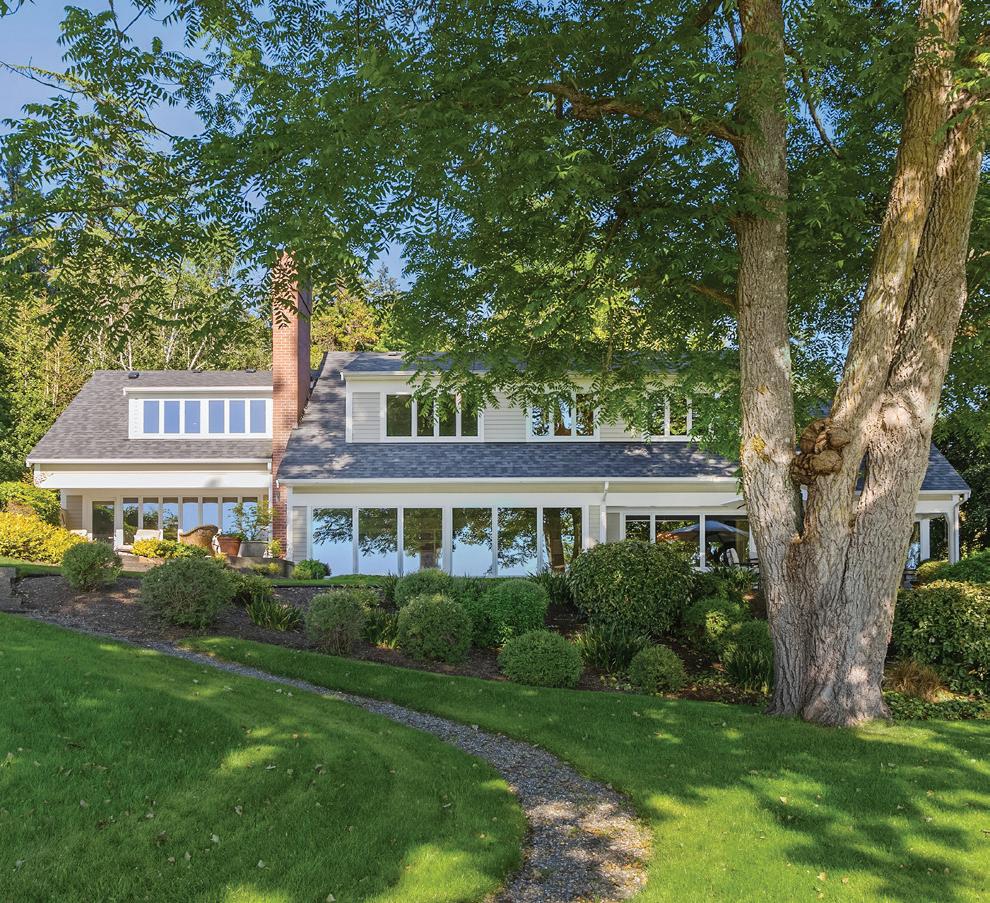




With each new phase of the postpandemic world, we’ve been told there’s a new normal. Our new normal in Seattle real estate is absolutely all over the place.
At first glance, the data tells us we’re in a fast-charging seller’s market. Real estate analysts peg a neutral market as four to six months of inventory.
In the last six months, our Seattle neighborhoods have seen 619 sales, with 295 active listings. We have about two months of inventory, which indicates a strong seller’s market.

However, comparing January to
July to the same period in 2022, we’re down 34 percent in total sales in 2023. Yet the pace of the market is breakneck. There are fewer real estate transactions because there are simply fewer homes for sale. But when you dig deeper, there’s more the data can tell us. If you’re buying or selling a home priced at $2 million or lower, it’s a battle zone, despite interest rates being higher than they were in the first six months of 2022. We’re seeing a low inventory of available homes, sellers getting multiple offers, buyers waiving contingencies, and cash offers getting snapped up.
It’s creating hysteria and stress on almost every buyer.
At the upper edges of the market, however, things are calmer and slower going. Houses sit on the market longer, and buyers have more of an edge.
Navigating and succeeding as buyers or sellers depends on your price point.




Homes under $2 million in our neighborhoods are highly desirable and the low inventory makes it highly competitive. In early July, a home here was listed at $1.5 million and received a whopping 34 offers in almost no time.

In another case, a home that had been under contract returned to the market (the buyers were no-shows at settlement, forfeiting their earnest
money). It had three offers on the first day back on the market.
That doesn’t mean, however, sellers can stick a “for sale” sign in the yard and get the price they want. This landscape has changed.
There’s a new breed of buyer, those who are looking for their first home or upsizing and looking to build wealth. They’re demanding a turnkey experience. Many of these buyers need to see a home staged and furnished — an empty home or a diamond in the rough isn’t on their list of wants. One set of buyers asked if they could buy the furniture the stager used because they liked it just the way it was and did not have an interest in shopping for furniture… (the stager declined that offer).









For more information, to schedule a tour or a complimentary consultation, please feel free to contact me by phone or email. Or visit my website lisaturnure.com by scanning the QR code below with your phone camera.



206.919.6605 | lisa.turnure@cbrealty.com | LisaTurnure.com EXPERIENCED. INNOVATIVE. TRUSTED.










“We knew Laura was a top agent in Seattle, so we asked her to list our home on Camano Island and she happily took it on. The marketing materials Laura created were simply beautiful and showed off our home in an amazing way. When we faced an issue just before closing, Laura connected us with an attorney who also did a terrific job for us. During the entire selling process, we felt we were in the best hands ever due to Laura’s responsiveness by text, phone, or email.” - Pam & Jack Jolley







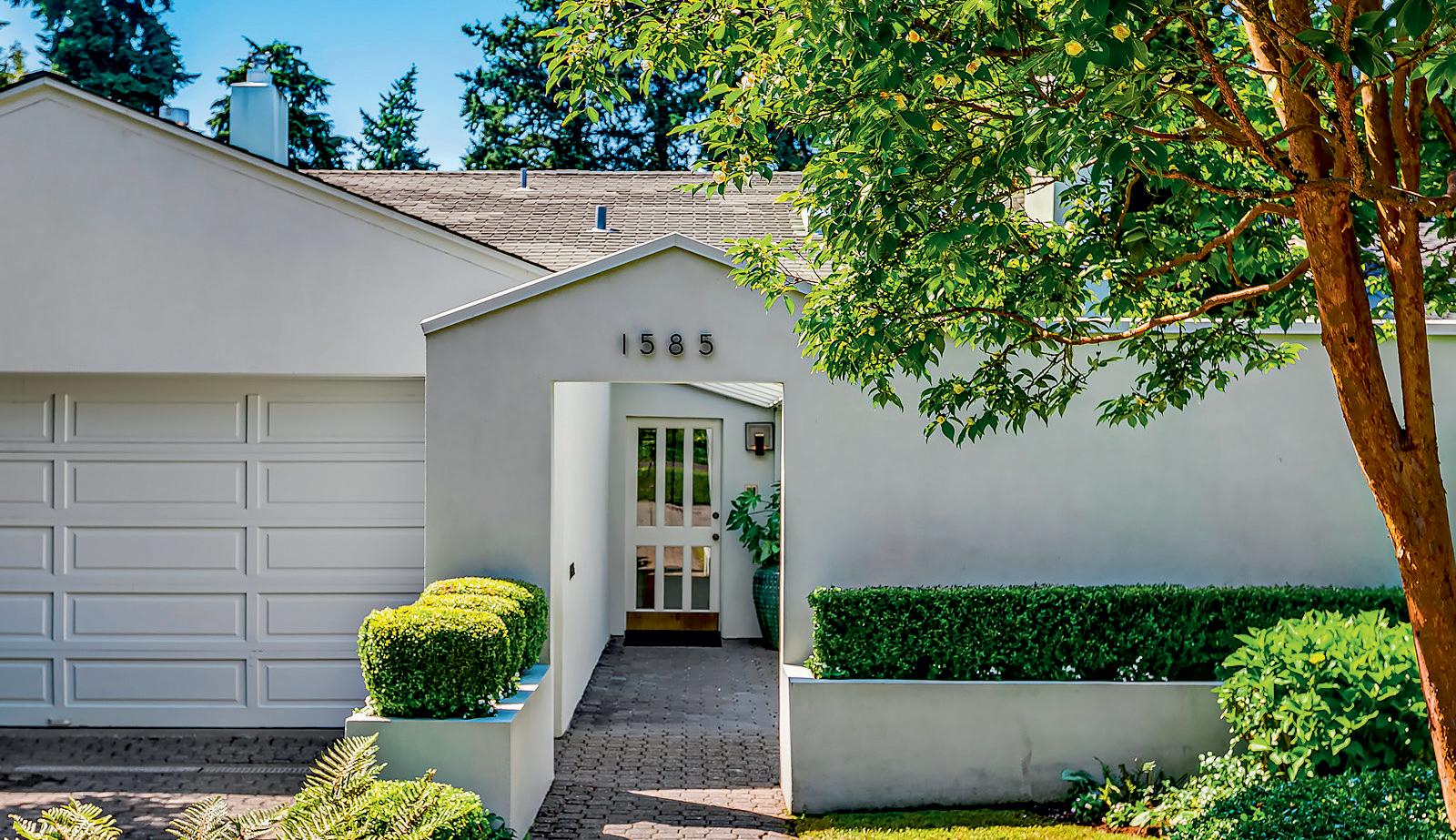
1585 Parkside Drive East This is the kind of home that everyone wants to gather at and mingle in. Yes, as the saying goes, sometimes less is more...but when it comes to finding a home that checks all the boxes (and then some!), I say more is definitely more. Lock-and-leave luxe living!

2061 43rd Avenue E #300 One-of-a-kind residence that spans the entire third floor with three bedrooms, 3.5 bathrooms, a library, large laundry, and a well-appointed kitchen that opens to the adjoining family room, which opens to the expansive 867-squarefoot terrace with unobstructed lake and mountain views.

If you’re selling now — or planning to list soon — in this price range, you have to show buyers a move-in ready home. at means landscaping, deep cleaning, repairing, painting, staging, and presenting the home at its best. You’ll also be vying for those vendors with homeowners who are staying put and are also tackling home improvement projects. I contacted a painting company I’ve used before and the schedule was booked out until next year. Another experienced painter was available and got the job done, but the competition is sti . Keep in mind, that money you spend on prep will come back to you (and more) when you sell. It also helps to have a broker on your side who has a network of contacts who can get the jobs done.
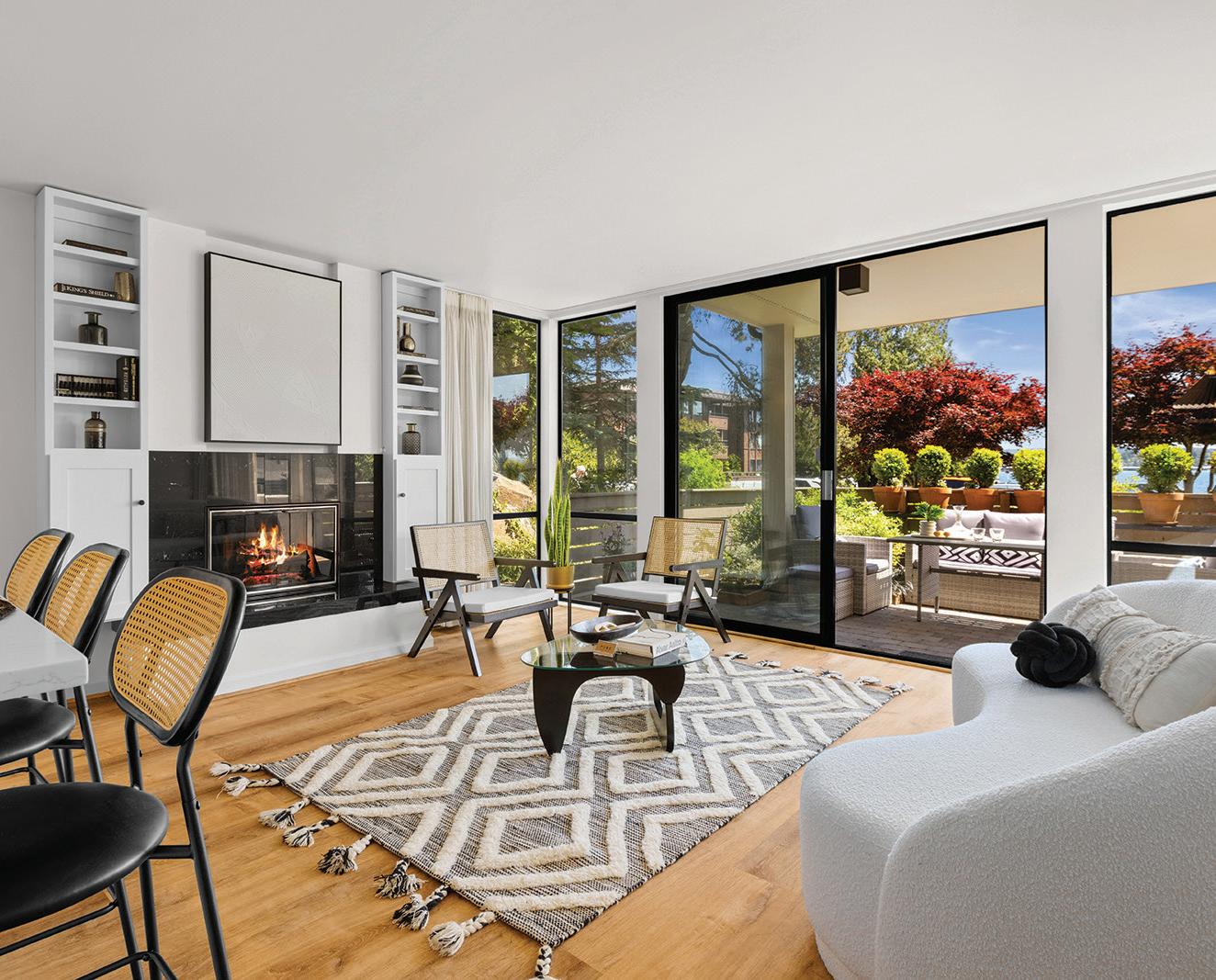


If you’re trying to buy in this price range, have your nancing buttoned up and ready to go. You need to be fully underwritten and approved so you and your lender can move fast. If you have cash on hand, this is the time to use it — I had buyers get their home because they could come in with all cash and could close in seven days, even though their o er was lower than the competition’s.

It’s a hysterical market in this price range. To succeed, you have to stay calm and cool. Have an experienced broker on your side, one who won’t give in to the hysteria, and be desperate to make a deal because his or her transactions are down. Find the one who will represent your best interests at all times, can lead reasonable negotiations, and bring in the help you need from their network.
e upper end of the market is quieter, though it’s active when the home is right. Buyers looking above $2 million have more breathing room and a slower pace. ere’s more room for negotiation because there’s less competition to buy these homes. I have a beautiful home on the market listed for $9 million. For 30 days, it’s had two to three showings a week, but buyers are taking their time.

If you’re selling in this range, be patient and open to negotiation.

Wherever you are in this housing market, understand that it can be a roller-coaster ride. Conditions change weekly, even daily. To make the most of your investment in your home, you need an experienced broker, one who’s been successful in up, and down, markets over time. One who understands your needs and how they relate to what’s happening now, not last month or year.
My team and I work with our clients to give them the best advantages for their unique wants and needs. We rely on our collective experience and what the data tells us. My o ce, team, and home are here in Madison Park, and we love helping our neighbors make the right moves for them and their future. If you’ve got any questions about navigating this real estate market, let’s set up a time to talk.


Chris Sudore is a Madison Park resident and Managing Broker Coldwell Banker Bain | Global Luxury. Reach him at KingCountyEstates.com or at Chris@ KingCountyEstates.com.

What do you picture when you imagine “fungi”? Grocery bins replete with button and shiitaki?
Mushroom tops dotting decaying logs in a deciduous forest grove? Chantarelles sauteed in butter — an umami delectable? A stubborn toenail infection? A psychedellic portal? e rst organism to colonize land over 1.3 billion years ago? e source of Penicillian? A potent medicinal tea?
Fungi are all of these and more. Home to an estimated 1.5 million fungal species (six times the species of plants!), our planet is lled with fungi whose properties and functions are enormously diverse.



Perhaps the most wellknown fungi in the herbal healing world is Reishi (known as Ling-Zhi in

Chinese medicine). Reishi is the Japanese name for Ganoderma lucidium, a species of mushroom native to Asia, where it has been revered for its healing properties for over 2000 years.
ough Ganoderma lucidium does not grow wildly in the Paci c Northwest, two of its close cousins — Ganoderma applanatum and Ganoderma oregonense — do! All three Ganodermas are hard, woody, shelf mushrooms that harbor darker tops and white underbellies speckled with pores, rather than gills. All three break down decaying trees, thus returning vital nutrients to the soil and relaying water, minerals, sugars, and carbon to neighbor plants in need. And all three boast bene cial medicinal compounds.
With over 34 years of real estate experience, we would love to be your real estate experts when it comes to marketing your home and purchasing a new home. We are excited to talk with you about your options!




























Arose is not just a rose — pick the right ones for the Paci c Northwest.









At high summer is when roses come out to shine. ey also have a quieter reprise in September before they go gently into winter, but if you are considering adding a rose or two to your life, this is the perfect time to nd inspiration in gardens.

Roses are having a massive re-brand. Although they have been adored for centuries around the world, and are as a group very long-lived and resilient, the hybrid teas in fashion from say the 50s to the 80s gave them an unfair rep as highmaintenance divas. Many of those were bred more for tall stems for orists and ower show tables, and less for garden-worthiness and disease-resistance. ey were sprayed for diseases, fed massive amounts of fertilizer, and had to be continuously pruned and cleaned. Most of the time they were segregated into rose battalions, with nary a groundcover in sight, to preserve air circulation.
Happily, breeders got busy creating roses that were disease resistant, and had a loser, relaxed shrub form that t better into the garden — and also into our busy lives. ey could play with other plants, and needed less spraying, feeding and fussing.
e Paci c Northwest is great for roses in that it tends toward very warm and dry in the summer, when roses are leafed out. Cool rainy springs and falls are not their favorite, so choosing varieties that are resistant to fungal diseases like black spot and mildew, and make sure to give them a little elbow room for air circulation. If those conditions show up, remove all a ected leaves to prevent the disease spreading this year or next.
In Seattle, the Woodland Park Rose Garden is a lovely short visit with no admission charge, and it demonstrates best practices using more organic care methods, as well as lovely examples of underplanting to cover the roses’ knobby knees.
Today there are numerous “shrub” roses that blend into the garden or border beautifully, and many are even fragrant — which for me is a main point of a rose. In my own garden, I probably don’t have enough roses, but someone would have to go to make room in my sunny beds. Also, few of mine are fragrant, so that needs to be remedied. But, I will say they are all easy-care and have been disease-free.
e roses I do have are:




• Climber ‘Lady Banks’ — a once-blooming charmer that smothers itself with smaller lemon yellow owers in May. It’s a fast grower that in our yard would like to be pruned for neatness at least twice a year,, but it’s thornless, so it’s easy. e world’s largest known rose specimen in Texas is a Lady Banks. Watch out, that’s all I’m saying.
• Rosa glauca — a species rose that’s di erent from what you probably think of, but lovely in every way. Blue foliage, burgundy stems, cerise single blooms, bright red hips all make it a threeseason standout.
• ‘Flower Carpet Amber’ — in my parking strip, it puts on a great show with apricot-yellow buds and cherry red buds. It’s supposed to rebloom, so am practicing not deadheading and fertilizing lightly with a balanced fertilizer. is is a “groundcover type” a group also including the “Dri ” and “Oso Easy” series.
• ‘Westerland’ — a lusty shrub with vivacious tangerine owers and a nice scent but some honking big thorns. It’s making it with

scant attention in a clay soil bed. Well, I mean, I prune it in spring, and throw some compost and mulch on it, of course.
• ‘Mister X’ — Not his real name, my best guess is this is the gra variety for some other rose that failed before we moved in. Most roses are gra ed onto a tough-as-nails variety at the base. You’ll see a big lumpy union that should be kept two inches below ground. I’ve been pruning it to stumps for 10 years and it looks better than ever this year.
It has double burgundy blooms — I see similar ones around town that I imagine are also gra -takeovers.
If I had space, I’d consider the once-blooming but unforgettable old rose ‘Maiden’s Blush,’ or a fragrant David Austin-bred shrub rose. Erin Benzakein, of the famed Floret Farms in Snohomish, is tempting me with videos of all her favorite David Austins now, making me eye which shrub will have to go. While the biggest selection of roses will be in February through April sold bare root, you can nd roses in containers at you nursery now, and the buyers will select roses ideal for the PNW. NitaJo Rountree’s book “Growing Roses in the Paci c Northwest: 90 Best Varieties for Successful Rose Growing” is a great resource to study while you make your shopping list.
Chinese medicine practitioners know Ganoderma lucidium as a key support for patients seeking balance in a stressful world. I value it for its two-fold ability to not only calm and relax the mind and body, but to simultaneously engender energy and vitality when consumed in small doses over time. Whereas many herbs target specific body systems, Reishi cultivates wholebody wellness. It supports the cardiovascular system, respiratory system, immune system, digestive system, and emotions.

For centuries, Chinese medicine practitioners have lauded Reishi for its ability to help folks stay healthy and resist disease. Recent research reveals why. Studies suggest Reishi possesses antibiotic properties (enhancing resistance to streptococci, pneumococci, e-coli, and more), immune-boosting properties (augmenting monocytes, macrophages and t-lymphocytes) and cancer-fighting properties (upping production of tumor fighting molecules interleukin and interferon). In one in vitro study of 58 mushroom species, Ganoderma lucidium was found to be the most effective at fighting cancer cells, yielding apoptosis of rodent


and human tumor cells including bladder, liver, lung, prostate, cervical, and ovarian. Ongoing studies support Reishi’s potential for aiding in cancer prevention and possibly even treatment.
Though you won’t encounter Reishi on this summer’s Northwest hiking adventures, you may discover its cousin Ganoderma applanatum (Artist’s Conk) on a decaying hardwood tree or downed poplar, maple or alder log. In fact, one literally fell on my boyfriend’s foot when he was measuring a hardwood tree in a south Puget Sound forest recently as part of a carbon sequestration assessment. Of course, I’m very much excited to turn this conk into a tea and share in its goodness. Like its Reishi cousin, Artist Conk is wood-like and too hard to chew. Instead, those fortunate to find this fungus can consider sustainably harvesting it, drying it, and preparing it as a tincture or tea.
Whereas Reishi is an annual (growing and then dying each year), Artist’s Conk, a perennial, adds new growth each year in the form of a furrow, such that the number of its furrows indicates its age — similar to a tree’s rings. The conk can live and grow for
decades, occasionally reaching over 30 inches across, and can be found adding beauty to forests yearround.



Artist’s Conk is known to teem with many of the same healthpromoting chemical compounds as Reishi, including beta-glucans and triterpenes. Research suggests that beta-glucans — potent immunomodulators found in mushrooms, seaweeds, oats and barley — could not only enhance the function of macrophages and natural killer cells, but also play a role in reducing hypertension and insulin resistance. Triterpentines have likewise been described as immunomodulators, and have further been appreciated for their antiviral, antimicrobial, antiinflammatory and antitumor promise. Historically, Artist’s Conk has been used medicinally to reduce indigestion and resolve phlegm.




Whereas Artist’s Conk can be spotted on local forested trails year round, its cousin Ganoderma oregonense (Oregon Reishi), an annual, comes into its prime in August. By the end of September. it begins to decompose, recycling its nutrients back to the forest floor and supporting a plethora of insect
communities.

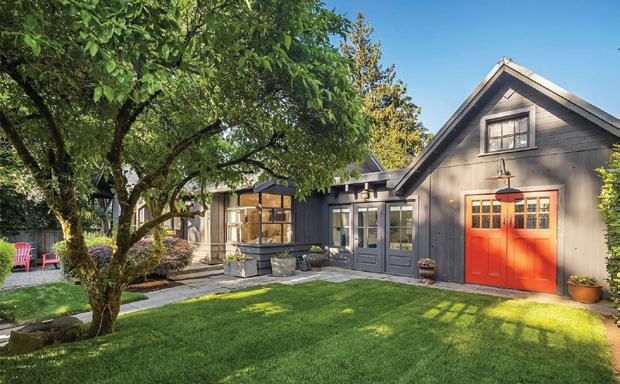


Despite its name, Ganoderma oregonense is not restricted to Oregon, but dots ancient conifers, with a particular affinity for hemlocks, from northern California to northern British Columbia.

Softer than many of the other 80 known species in the Ganoderma genus, young Ganoderma oregonense can actually be cut, sauteed, and eaten. It is chewy and relatively neutral in taste, ideal for soaking up and potentiating the flavors of garlic and tomatoes.
Compared with Reishi and Artist’s Conk, little is known about the potential medicinal and nutritional value of this fungi, but DNA similarities suggest it shares chemical properties with its medicinal Ganoderma relatives. I look forward to learning more about its potential role in human health as ongoing research findings come to light. Until then, I appreciate this local conk for its rare red hue amidst a forest of greens and browns, for its vital participation in old growth forest ecology, and for its relatively soft, chewy flesh.
Next time you encounter the term “fungi,” I hope you perceive it with a new appreciation for the potent healing power of Reishi, and an awareness of its local Northwest cousins.





